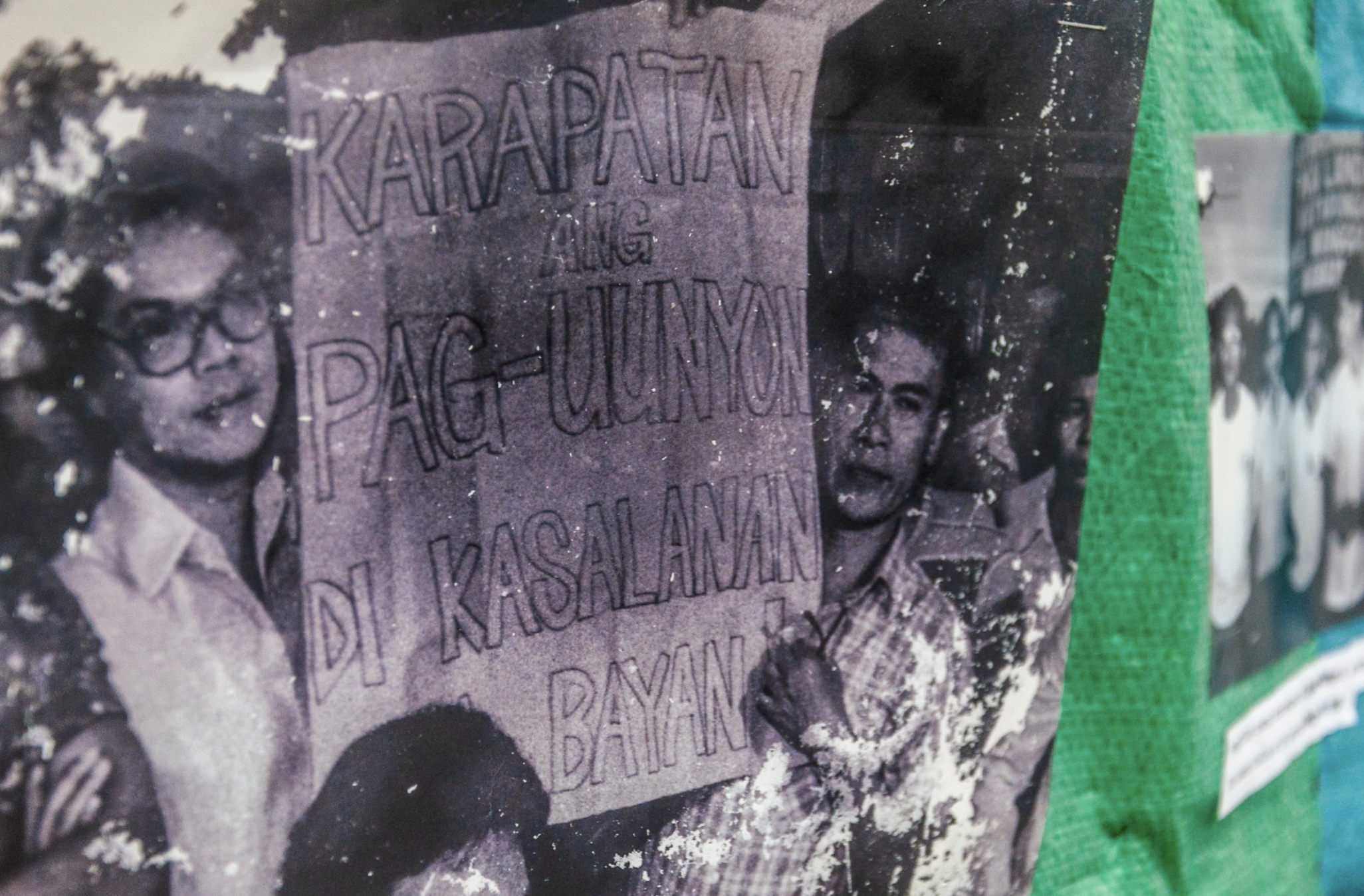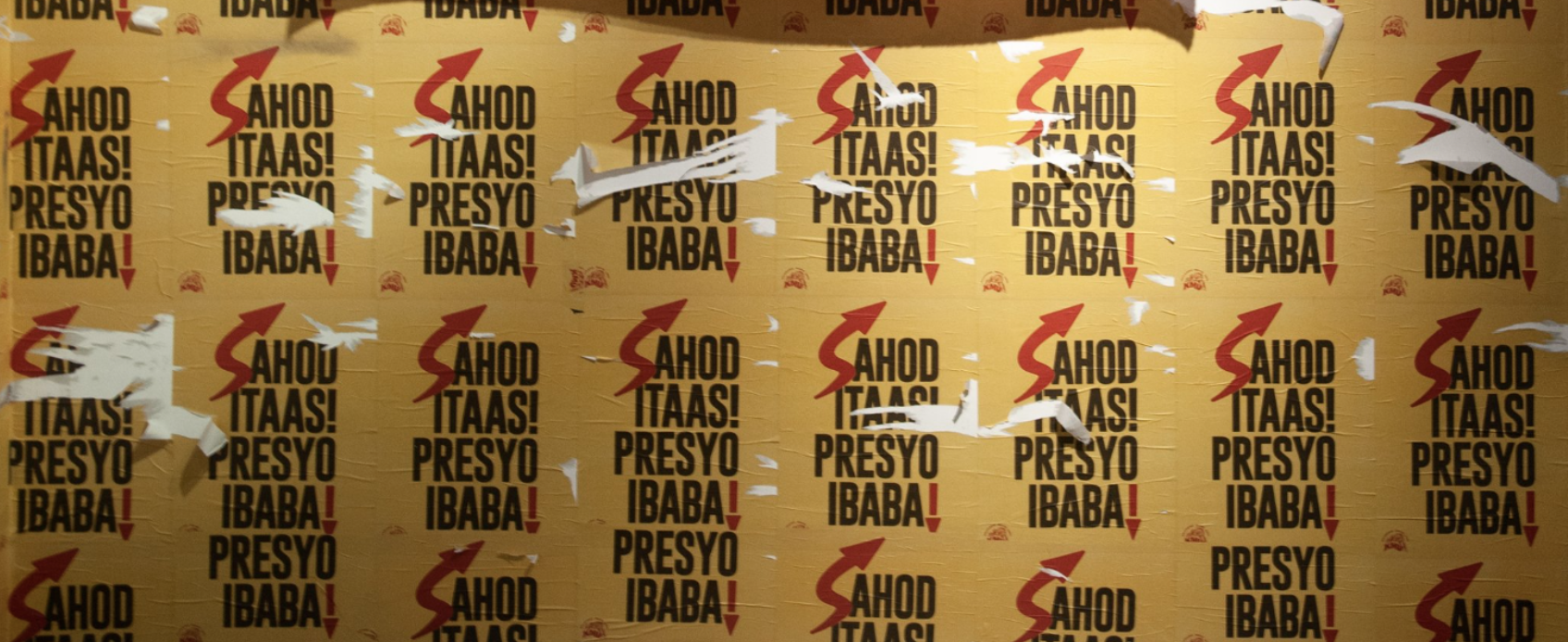
















Completing our exhibitions programme for 2022, MONO8 is pleased to present "Rise and Fall: Decay of the Ruling Class", which features works by activists-artists Jonas Camposagrado, Tamar Karam, and Ian Marinda; a mural by Tambisan Sa Sining, and photos from the Philippine Labor Movement Archive. The show is a collaborative work that investigates and assesses the workings and dynamics of fascism in the past and present contexts.
Fascism is a system of government indicated by far-right politics, absolute leadership, and forceful and violent suppression of criticism. It is often attributed to dictatorial regimes in their final stages of clinging to power. However, the truth behind fascism is the ever-going existence of class contradiction and private property.
It does not simply arise from nowhere, but from the sharpening struggle between the ruling elite who seek to maintain the status quo from which they amass wealth and power, and the masses who seek freedom from a system rife with inequalities and abuse. Fascism is a “need” perceived by those who own in order to defend what they have from those seeking the just distribution of those ownerships.
In the Philippine context, fascism came to be during the period of Spanish colonization. Spanish inquisitors and the friars and local landlords who connived with them used the “sword” – violence perpetrated by the guwardiya sibil – when the common peasant folk rose against land-grabbing and the harsh working conditions in the haciendas, and eventually formed the Kataastaasan Kagalang-galangang Katipunan ng mga Anak ng Bayan or the KKK.
American and Japanese colonizers also used fascism to crush the swelling nationalist movements which strived for national independence and freedom from colonial rule. They mobilized their troops and conspirators to destroy the democratic struggle of the Filipino people, and crush the Hukbo Laban sa Hapon (HUKBALAHAP), respectively.
Then, Ferdinand Marcos showed the most brazen display of fascism which made the Filipino people acutely aware of the concept of fascism. Thousands fell victim to forced disappearances, torture, intimidation, and harassment among other more gruesome things for fighting against anti-people policies and the worsening economic crisis brought by his term.
Presidents who succeeded his overthrow fared no better. Though they used a more roundabout approach, fascism continued through different faces. From Cory Aquino’s policy of “low intensity conflict” to Rodrigo Duterte’s EO70 which birth the NTF-ELCAC, thousands of workers, peasants, youth, women, national minorities, church folk, artists, and even lawyers who struggled for pro-people policies, democratic rights, economic benefits, government services, and ultimately foreign independence remined at the brunt end of fascism.
The pattern of using the armed machinery of the state against the critical masses, is a trend present in all stages of our country’s development. From colonization to Marcos’ dictatorship to the re-election of Marcos Jr. to office, fascism remains the policy of the ruling class. But the same can be said of revolution for the critical masses.
This show is the collaborative work of three artists which aims to show said pattern: a walk through the historical development of fascism by Tamer Karam, an exposition into the inner workings of fascism by Ian Marinda, and look into the solution to uproot the core of fascism by Jonas Camposagrado. The Philippine Labor Archive will also show how workers were at the forefront of the fight against fascism throughout history.
Text by Nadja de Vera and David Perez

